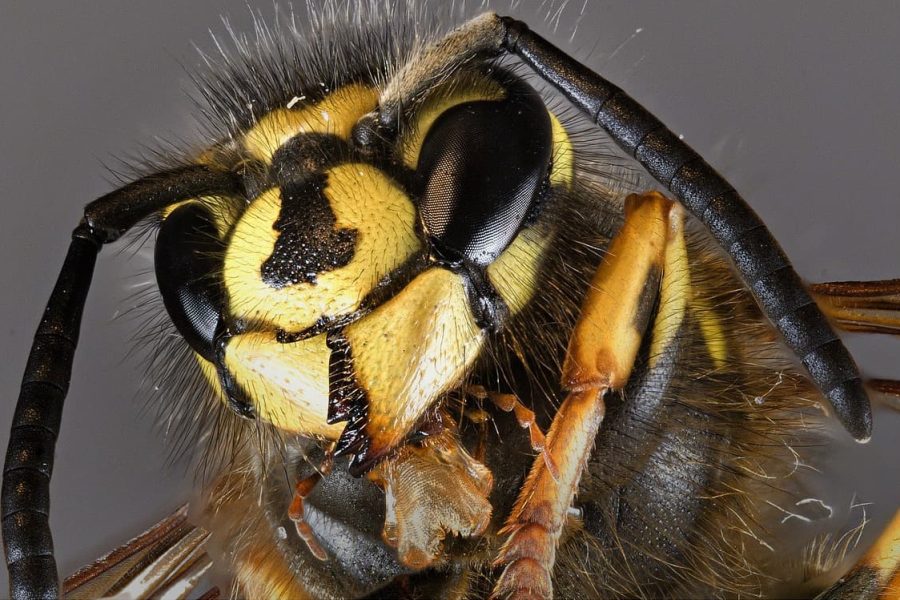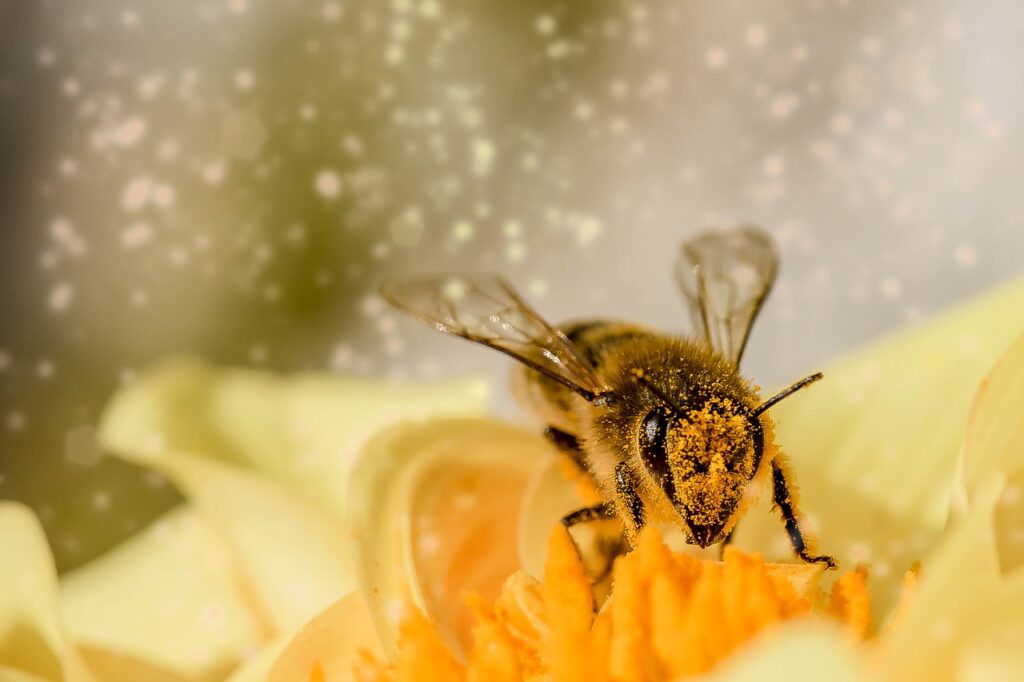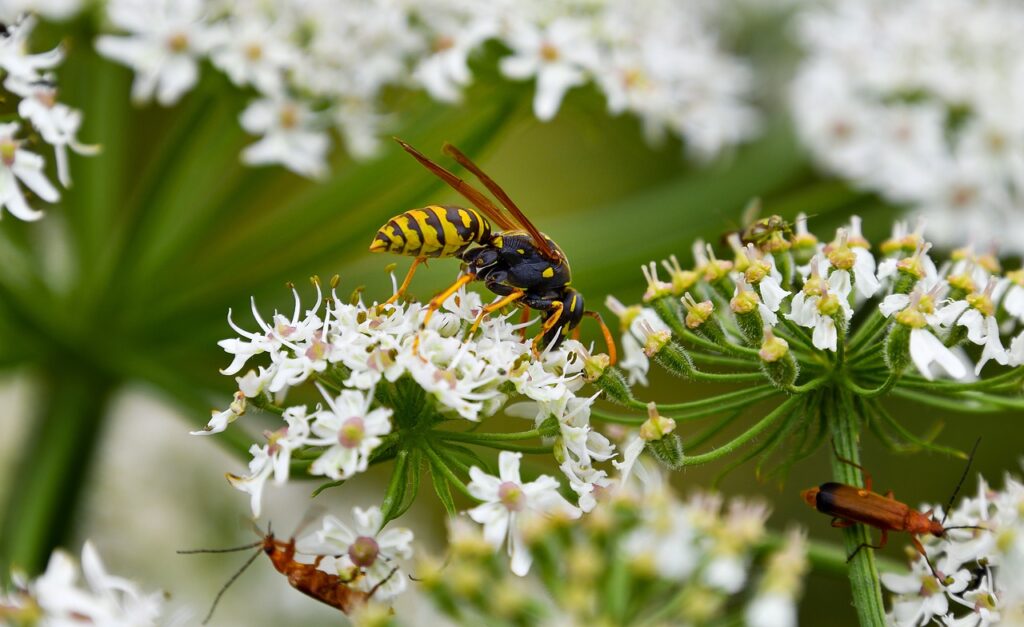
Learning to Identify Bees, Wasps, and Hornets
If you are unsure of the difference between bees, wasps, and hornets… you are not alone. In fact, it is a fairly common question asked of pest solutions professionals everywhere. And in the summer, fruits and flowers are ripening, and the flying insects are going bonkers. So, these striped buzzers can look similar when flying past your nose. But they are actually different in look, location, and danger to humans.
That is why James River Pest Solutions has gathered these clues to educate clients on how to tell the difference between bees, wasps, and hornets. Keep reading to find out more. And if you locate a hive in your yard, feel free to give James River Pest Solutions a call.
About the Bees
The tricky part about understanding bees is that there are different types. Some live in hollow trees, others are in unpainted wood and decaying trees, and still, others live in abandoned rodent burrows. But they both buzz around in search of pollen and nectar. But only the honeybees make honeycombs and honey.
Indeed, bees are highly revered for their honey-making genius. However, they are the primary pollinators for many crops we rely on. And without the bees, agriculture would vanish from the planet.
Bee Appearance
The most common bees in the US are honeybees, carpenter bees, and bumblebees. While honeybees are hairy and banded orange-yellow and brown to black in color. Those hairs help them collect the pollen they need. Bumble and carpenter bees are round with vivid black and yellow stripes.
The different bees range in size from ¼ inch to an inch long.
Are Bees a Danger to Humans?
When a bee stings a person, the stinger goes into the skin. Then the bee dies. Therefore, they really try not to sting you. They only sting if they really feel threatened or are protecting the hive. That said, a bee sting results in pain, swelling, redness, and itching at the site in typical cases. But, if you are allergic to bee stings, it can be life-threatening.

About the Wasps
Not sure if you noticed, but there have been a lot more wasps around this year than average. That may be due to the heatwave we have had, which ripens the fruits early. Wasps are all around as they build their nests in eaves, gutters, tree branches, bushes, and fences. Yellowjackets build nests in the ground, while paper wasps build umbrella-like paper nests. And unlike the honeybee, wasps do not produce honey.
Now, perhaps the most significant difference between wasps and bees is their diet. Wasps are carnivores. They like meat like that of soft insects, and they use their stingers to kill and lay their eggs inside their prey. And yellow jackets will even try to get your hot dog at the fair. But yellow jackets also like flowers and other plants.
And guess what? Wasps are pollinators, even without hair. Wasps act as natural pollinators and excellent pest control as they feed on caterpillars and other insects.
Wasp Appearance
The most typical wasps spotted in yards are paper wasps and yellow jackets. Most wasps are hairless, and they have a narrow or pinched waist. Each has a variety of colorings ranging in the white, orange, and yellow categories. However, the yellow jacket is usually black and yellow, making it hard to differentiate from bees. They range in size up to ½ inch long, with yellow jackets being the smaller.
Are Wasps a Danger to Humans?
Here is something you may not have known. Only female wasps can sting. That said, they do not like to sting humans, and they do not lay their eggs in human flesh. Wasps do sting when provoked, and they do not lose their stingers, so they can sting more than once. Yellowjackets sting when swatted at as you defend your food. But paper wasps sting readily and will sting you more than once.
Just like bees, if a person is allergic to wasp stings, the reaction can be severe. Other than an allergic reaction, the symptoms are the same. There will be redness, pain, swelling, and itch.

About the Hornets
Hornets are a subspecies of the wasp, but hornets are much larger. They are often referred to as the Brown hornet or the giant hornet. However, they are larger and fatter than the common wasps we see. And they feed on insects like the wasp. The European hornet likes to nest in hollowed trees and barns, and it is the most common in the United States.
Young hornets are known to eat caterpillars, but they will begin to pollinate flowers as they age. In addition, the hornets in some states are valuable in seasons as they help control the cicada population when they emerge from the ground.
Hornet Appearance
The best way to identify a hornet from that a wasp is the size. They can reach a size of 5.5cm in length. Also, they have a broader head and a much rounder body. And they are stripped with brown, red, and yellow-orange, having minimal black anywhere on their bodies.
Are Hornets a Danger to Humans?
The excellent news about hornets is they are thought to be less aggressive than wasps. However, you should note that the hornet’s sting is much more powerful. In fact, their venom is significantly more potent than that of the bee or wasp. And they also sting repeatedly, not losing their stingers.
As will all three, the sting is painful, and the site will have redness, itching, and swelling. The hornet’s sting is the most painful of the three. And if you are allergic to the stings, they can be life-threatening.
Summing Up the Difference Between Bees, Wasps, and Hornets
Perhaps now you know more about the difference between bees, wasps, and hornets. The most important things to consider when identifying the three are the following.
- The size of the insect.
- The slight variation in coloring.
- And what they like to eat.
Here is what the Old Farmer’s Almanac has to say on the issue.
“Bees and wasps took separate evolutionary paths over 100,000,000 years ago. Bees are vegetarians, collecting pollen to feed their young, while wasps and hornets are carnivores, feeding on other insects. The main thing that they do have in common is that only females can sting.”
As with all stings and bites, please seek the immediate attention of a medical professional if you are injured and notice any unusual reaction. And if you happen to see nests popping up in your yard or on your home, you know who to call.
James River Pest Solutions Can Help with Bees, Wasps, and Hornets
If bees, wasps, or hornets take up residence in your yard or home, you will want them out as soon as possible. For all the good they do, when they are not where welcomed, they can be pretty destructive. Proper removal of nests and relocation of honeybee hives of these hives are critical. A professional pest solutions company should be notified of the hive and called to come out and remove it. They have the tools and gear to get the nests and insects removed or relocated without injury to humans.
Should you need a bee, wasp, or hornet nest removed, call on the team’s experience at James River Pest Solutions to take care of the hive or nest for you and your family.
Contact James River Pest Solutions for professional pest control and rodent elimination today.